Canon 28-300 L IS USM Review
Super zooms are intriguing lenses: nearly all focal lengths you may need into a single lens! But often, the price to pay is a so-so image quality and cheap built quality. The Canon 28-300 is an unusual super zoom: Nikon, Olympus, Sigma and Tamron offers lenses with similar range, but the specs are very different from the Canon. The 28-300 L costs four times more than any other superzoom, it weight three times the Nikkor 18-200 and it is twice as long. That's not all: it is also the only superzoom that offers weather sealing, professional built quality and push-pull zoom. All these peculiar characteristics make the Canon 28-300 a pretty unique lens! I already tried it in the past when I published the first short review, but now I have had the opportunity to try it for some weeks and to write a more in-depth review, with tests and samples.
Specifications (in comparison with other super zooms)
����| � | � �Canon 28-300 L IS | � �Canon 18-200 IS (APS-C only) | � �Tamron 28-300 VC |
�
| �Focal length | � �28-300 mm | � �18-200 mm (29-320mm equiv.) | � �28-300 mm |
�
| �Macro ratio | � �0.33x (1:3) | � �0.24x (1:4.1) | � �0.33x (1:3) |
�
| �Max Aperture | � �f/3.5-5.6 | � �f/3.5-5.6 | � �f/3.5-6.3 |
�
| �Stabilization | � �Yes | � �Yes | � �Yes |
�
| �Autofocus | � �Ultrasonic Lens Motor | � �Lens Motor | � �Lens Motor |
�
| �Closest Focus | � �0.70 meters | � �0.45 meters | � �0.49 meters |
�
| �Dimensions | � �92 x 184 mm | � �79 x 102 mm | � �78 x 89 mm |
�
| �Weight | � �1670 g | � �600 g | � �550 g |
�
| �Weather sealing | � �Yes | � �No | � �No |
�
| �Price | � �$ 2500 | � �$ 600 | � �$ 580 |
�
| �Announced | � �2004 | � �2008 | � �2008� |
�
Built quality, stabilization and autofocus
Canon has labeled this lens as "L" - a professional lens - and they have sacrificed the small size and light weight to be able to offer "professional grade" image quality. In my opinion, this is the biggest disadvantage of an otherwise wonderful lens - a 1.7 kg lens is not really an "all around, carry everywhere" lens. In this respect, the Nikkor 18-200 VR is much better, it is so small and light that you can really carry it always with you; on the other hand, the image quality of the Nikkor is not on par with the Canon L lens.
The built quality is impressive - it is solid as a rock, and it is weather sealed. Other than that, the 28-300 is the only super-zoom with push-pull system (and even in the Canon lineup, the only other lens with push-pull is the 100-400 L IS). Even though usually I prefer the traditional zoom ring, I think that push pull is a big advantage on a superzoom, where you have a lot of focal lengths: the zoom ring is not as quick to use, when you have to zoom into such a wide range.
The stabilization is an huge help. Canon rates it at 3 stops, and in practical usage I can confirm that its effectiveness is the equivalent of a shutter speed 2-3 stops faster (of course IS helps to eliminate your movements, it does not help with subject movement). The AF is pretty good, the best I have seen in a super-zoom, but it is not as fast as the AF of brighter lenses as the 70-200 f/2.8 or the 24-105 f/4; anyway, it is still fully usable even for action and nature photography.
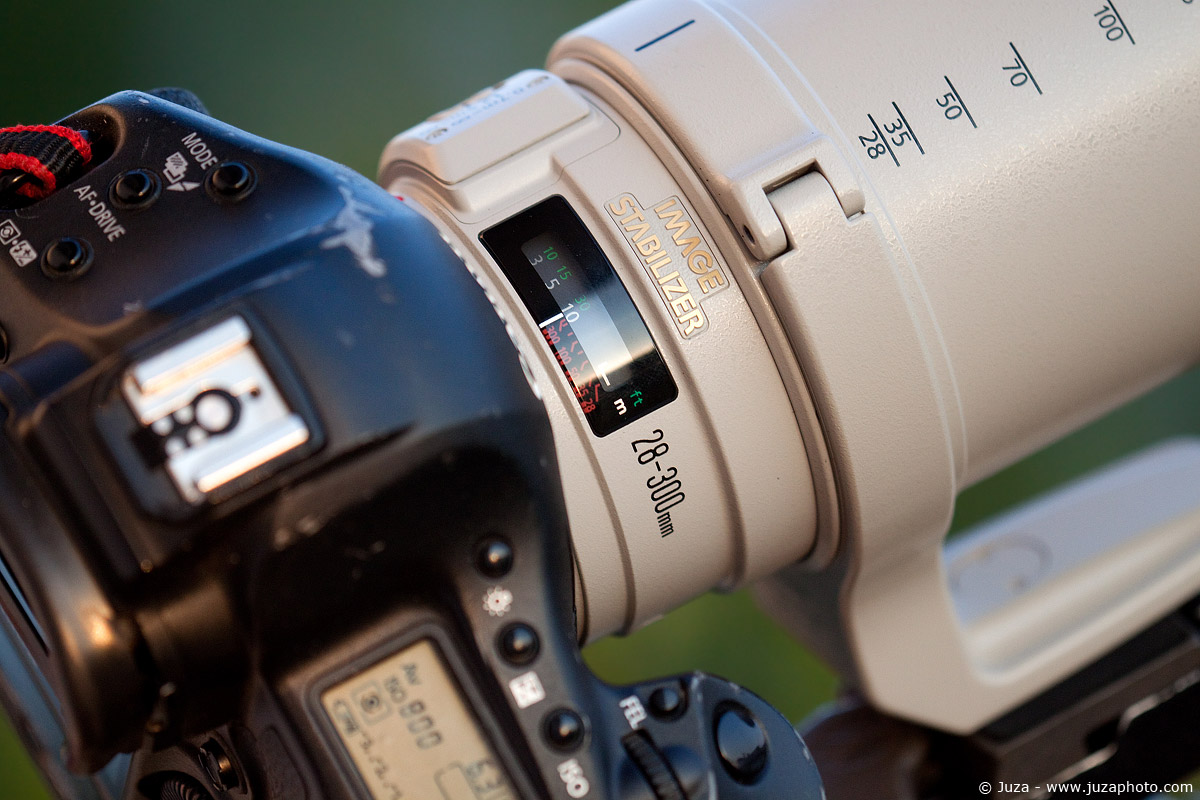
Image quality comparison : 28-300 L and 24-105 L
I was curious to compare the 28-300 with my 24-105: the 24-105 is a much more limited zoom, so I expected better image quality. But how big is the difference? I have tested the lenses on my Canon 1Ds MarkIII (21 megapixel, FF). The lenses was mounted on tripod; I have used mirror lock up and self timer. The following images are 100% crop from the unprocessed RAW file. I have tested the lenses both wide open and at f/11.
24/28mm, wide open:
����| � | � �center | � �corner |
�
| �24-105 | � �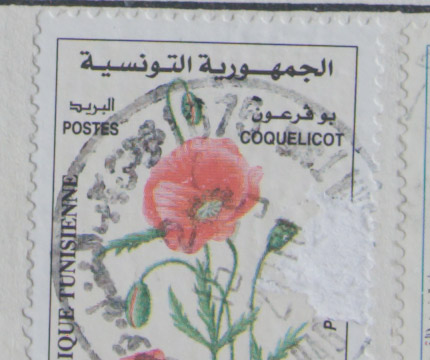 | � �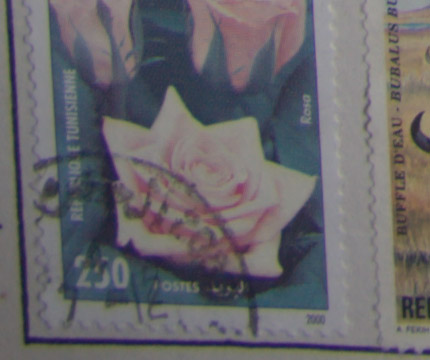 |
�
| �28-300 | � �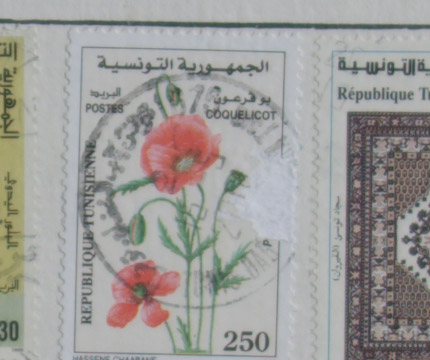 | � �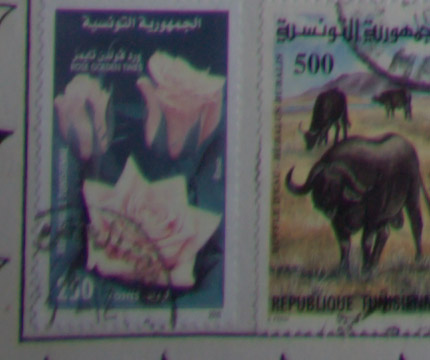 | �
�
24/28mm, f/11:
����| � | � �center | � �corner |
�
| �24-105 | � �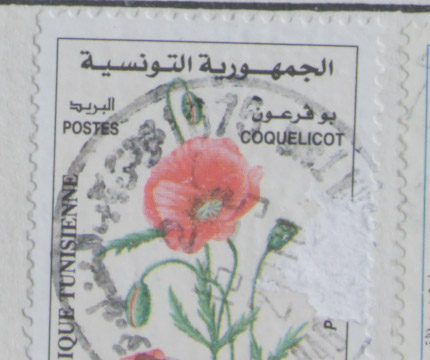 | � �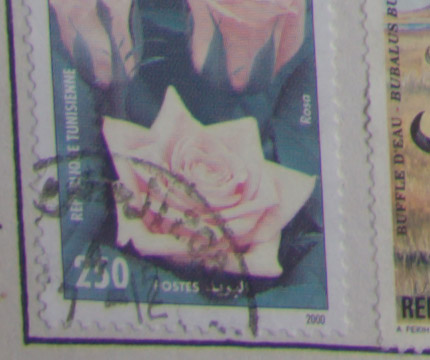 |
�
| �28-300 | � �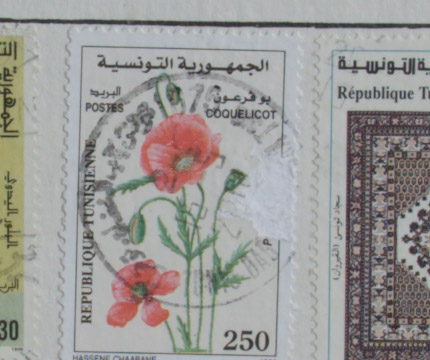 | � �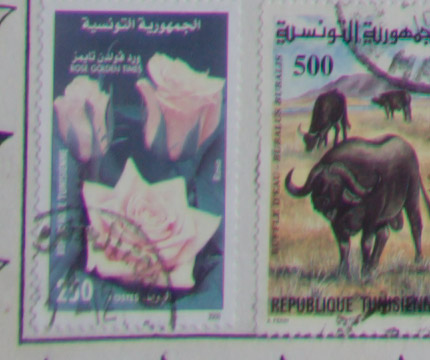 | �
�
First, note that the test target is slightly different, because the 28-300 at 28mm has very poor reproduction ratio capabilities, and even my large test target was not big enough to fill the frame, while in the 24-105 test I was able to fill the frame with the test target at every focal length.
Nevertheless, it is not difficult to compare the results. Wide open, the 24-105 has some advantage, in particular in the corners (but there is not a night and day difference). At f/11, instead, the two lenses give almost identical image quality (the 24-105 is still a little better in the extreme corners, but in real life it would be nearly impossible to tell which photo is taken with the 24-105 or 28-300).
105mm, wide open:
����| � | � �center | � �corner |
�
| �24-105 | � �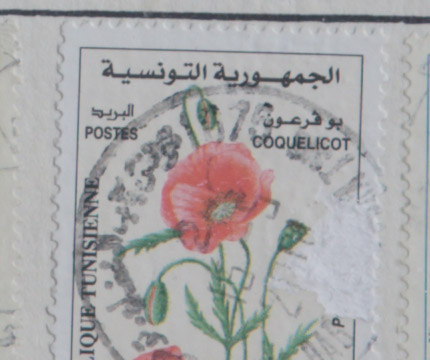 | � � |
�
| �28-300 | � �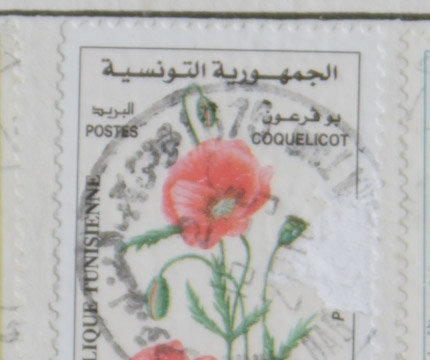 | � �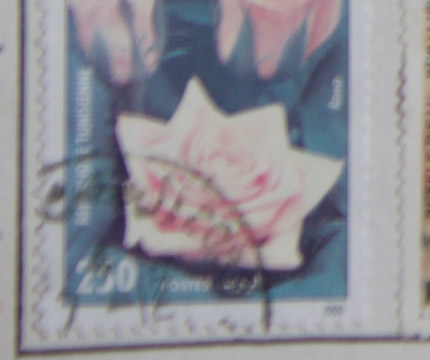 | �
�
105mm, f/11:
����| � | � �center | � �corner |
�
| �24-105 | � �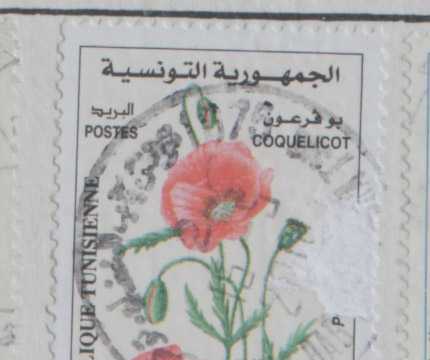 | � �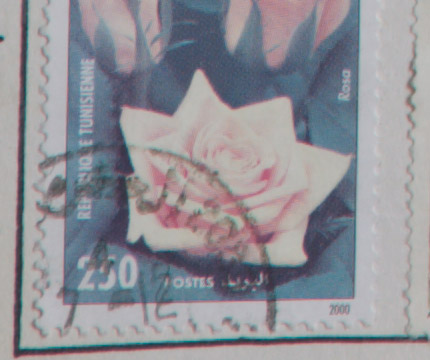 |
�
| �28-300 | � �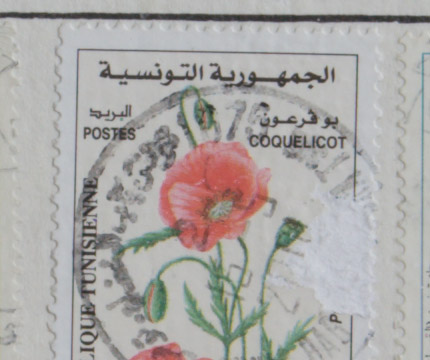 | � �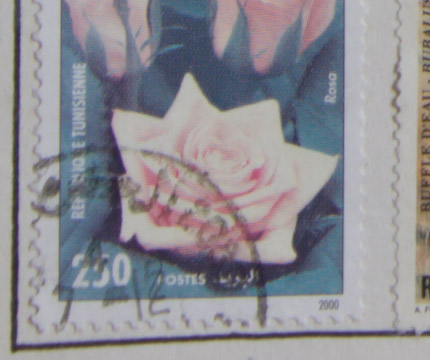 | �
�
At 105mm, the 24-105 is clearly better than the 28-300, wide open - it has more contrast and much sharper corners. At f/11, instead, they are nearly identical - actually, the 28-300 show a little less chromatic aberration.
Overall, the results are as expected - the 24-105 is a bit better (it has a much less extreme zoom range!), but even the 28-300 is not bad, considering that it is a 11x zoom!
Samples and comments
These are some sample photos taken with the 28-300 L IS on Canon 1DsIII. You can download the full size JPEGs; remember that these JPEG are images without any post processing and they are converted from RAW with neutral setting (minimum contrast, no sharpening, low saturation). With good post processing, you can improve considerably the photos!
�
�
The image quality is pretty good for a superzoom, both at the wide end and at the tele end, in particular in the center. For macro work, instead, it is quite disappointing - at 1:3 the image is quite soft, in spite of the f/16 aperture.
Even though Canon does not recommend to use teleconverters, I was curious to test this lens with the Canon 2xII TC. Canon states that the 28-300 is not compatible with TCs, but actually you can use them at focal lengths of 50mm or more: you just have to pay attention to not zoom back to 50mm or shorter settings, otherwise you may damage the lens. I mounted the TC and I tried a photo at 600mm, stopping down to f/18 for maximum image quality. The lens does not see the teleconverters, so it is not reported in the exif and it does not show when you select the aperture - so by selecting f/9 I was actually at f/18. The result is impressive, the image still has decent sharpness! But in practice this combination is almost unusable due to very poor or no AF and due to the small apertures needed for good sharpness.
Conclusions
I don't think that the 28-300 can be really compared with the other super zooms: they are targeted to two different groups of people. The Canon 18-200 IS, the Tamron 28-300 and the other super-zooms are for those who want small and light all around lenses; mainly amateurs and travel photographers. The Canon 28-300 IS instead is clearly a lens for professionals, mainly sport photographers and photojournalists, who need the maximum versatility is spite of large size, weight, and small loss of image quality compared with shorter zooms as the 24-105mm f/4 L IS or the 70-200mm f/2.8 L IS.
Even in the field of nature photography, the 28-300 can be used for a wide range of subjects, from landscape to macro and wildlife. The renowned nature photographer Joe Mc Donald is a big fan of this lens - I highly recommend to give a look to his
test report. Its range of focal length is ideal on a FF camera - on the Canon 5D2 or 1Ds3 you have everything from wide angle to a good tele. If you need more focal length, you can even use this lens with a 1.4x TC to get a 420mm f/8, even though there will be a visible loss of image quality. On APS-C cameras as the Canon 7D, you get the equivalent of a 48-480mm, so you lose the "all around" character of the 28-300, and you need to couple this lens with wide angle, as the Sigma 10-20 or the Canon 10-22. The only advantage of APS-C cameras is that they use the "sweet spot" of the 28-300, that is the central area, so you won't see softness in the corners. That said, I think that overall this lens fits much better a FF camera than and APS.

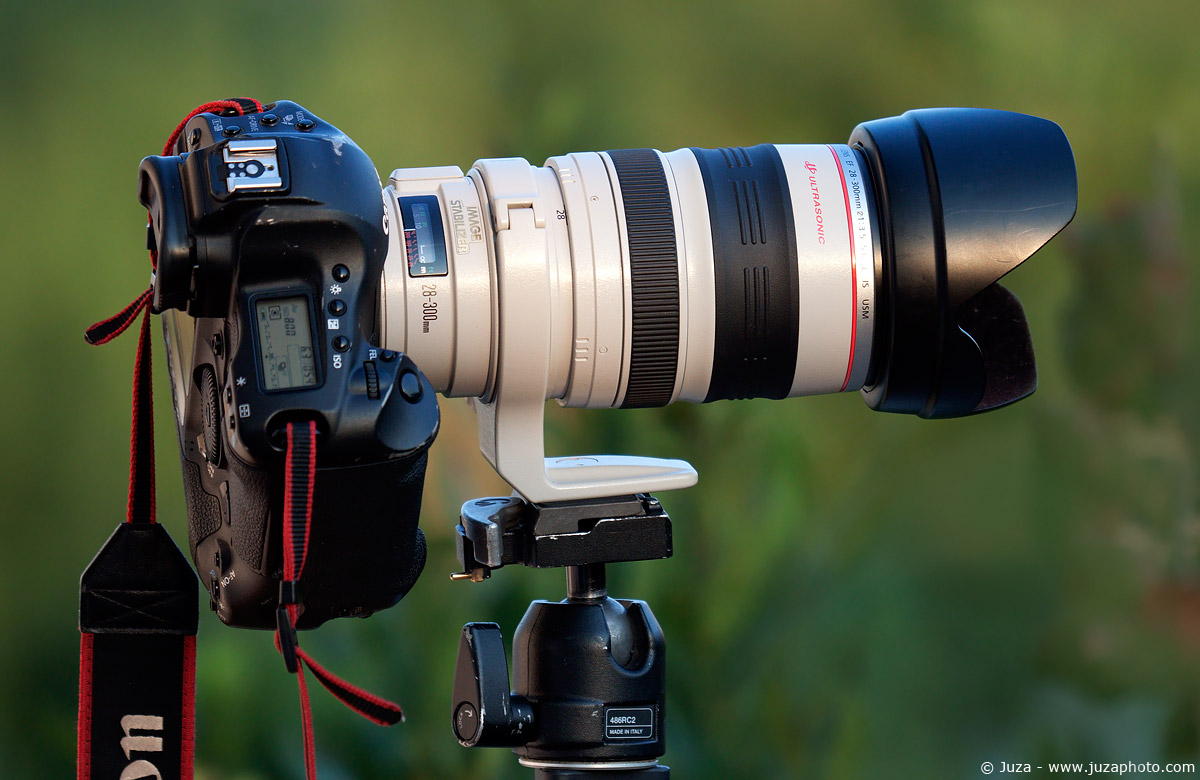

















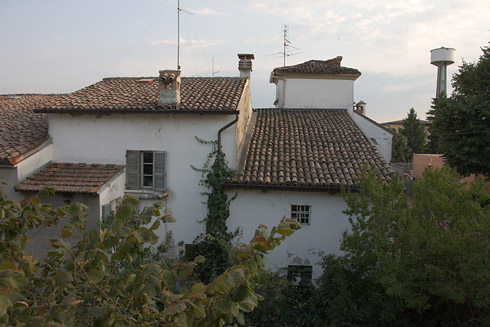
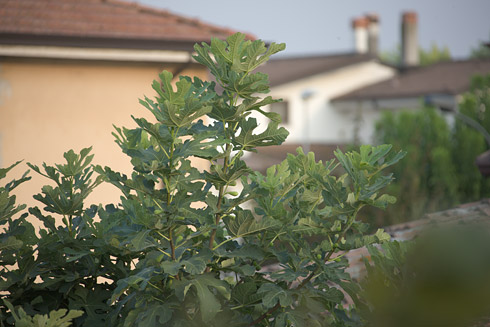
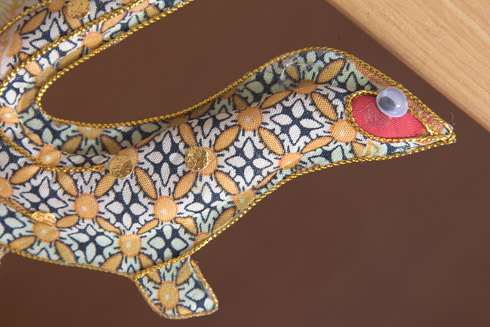
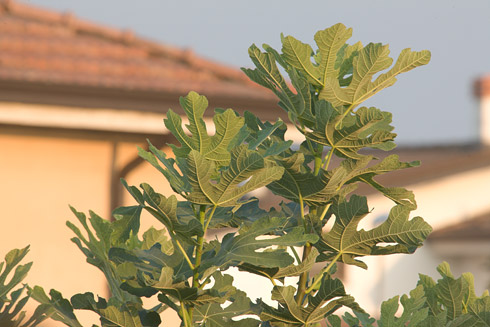
 JuzaPhoto contains affiliate links from Amazon and Ebay and JuzaPhoto earn a commission in case of purchase through affiliate links.
JuzaPhoto contains affiliate links from Amazon and Ebay and JuzaPhoto earn a commission in case of purchase through affiliate links.